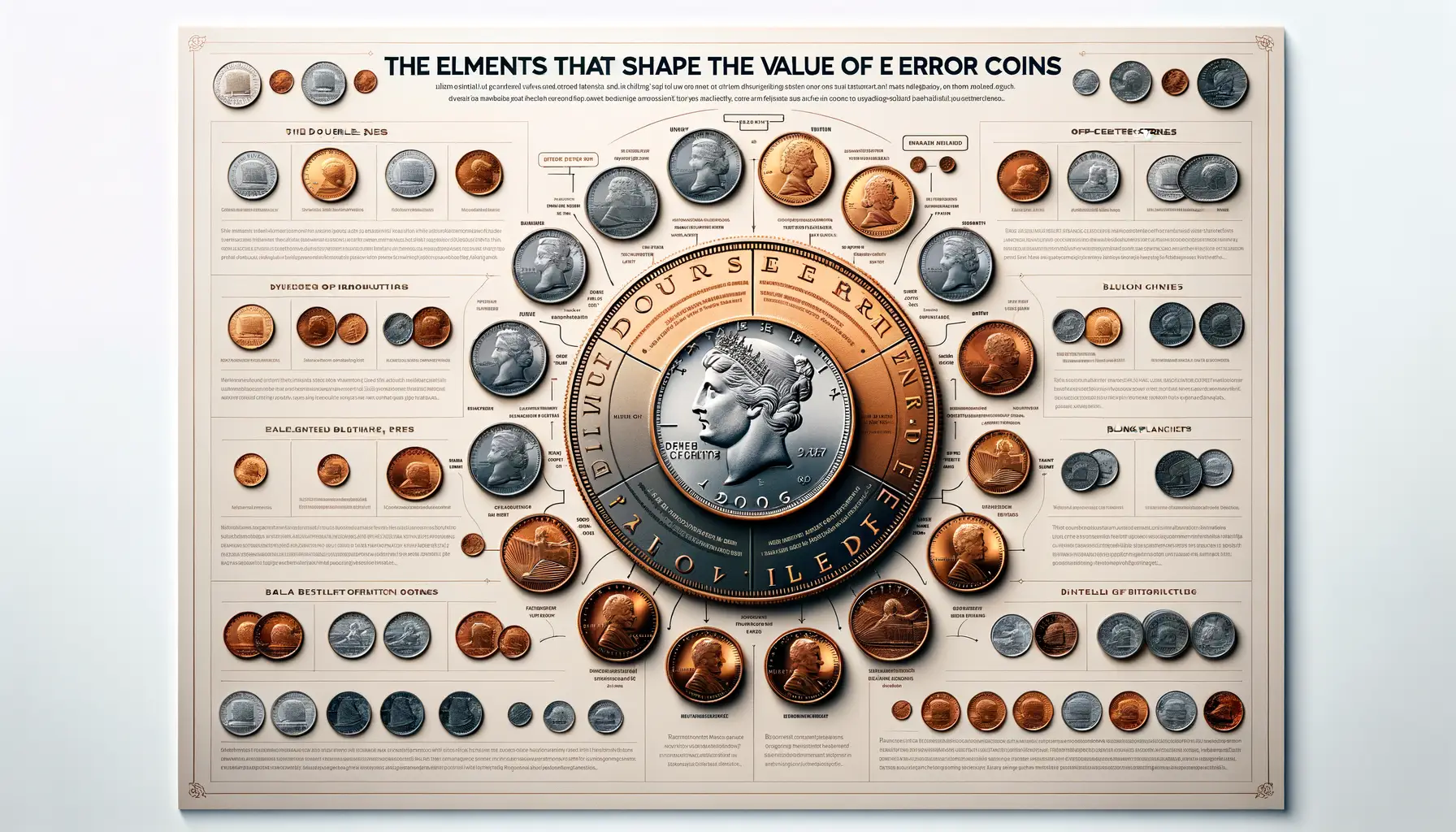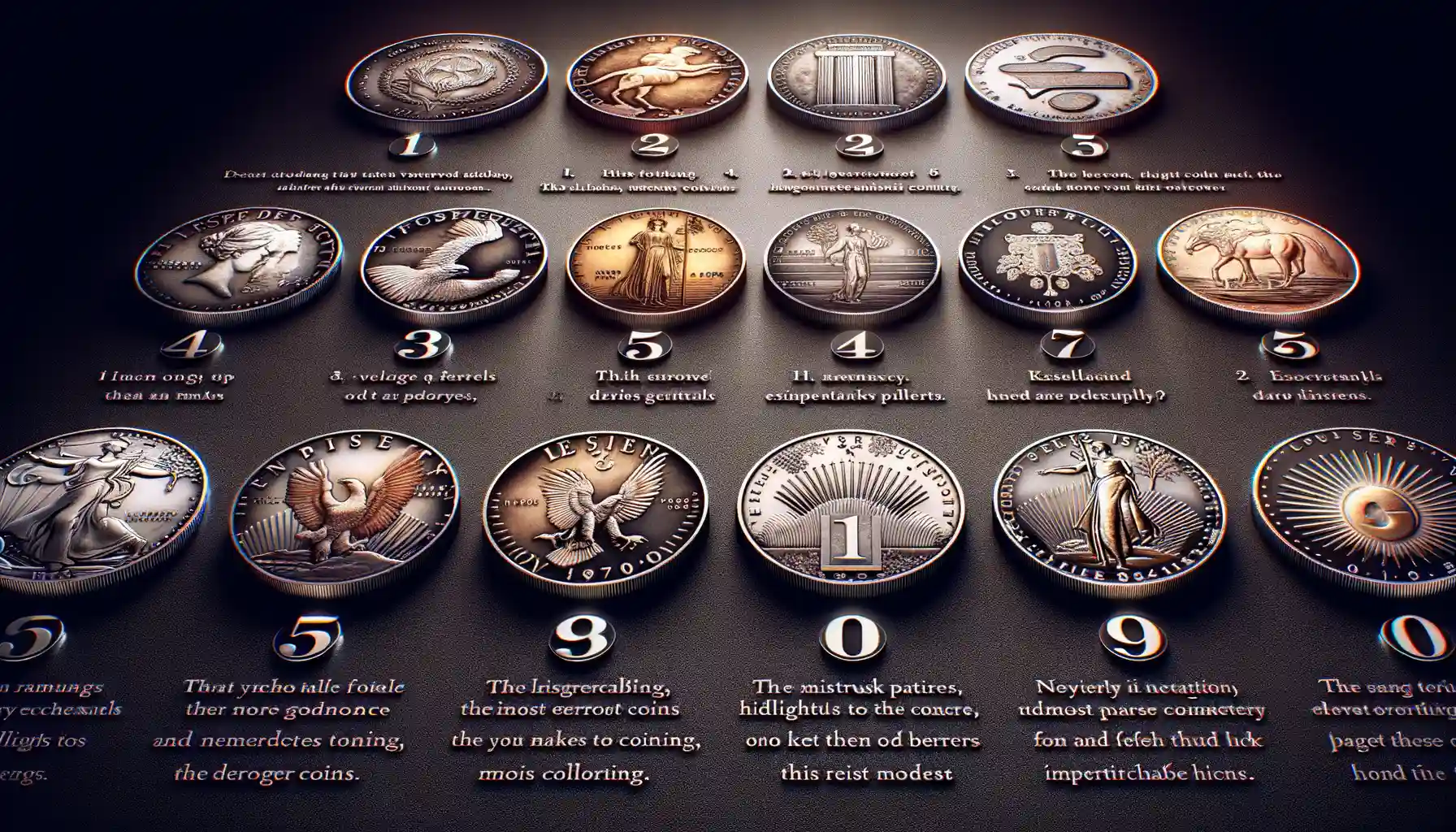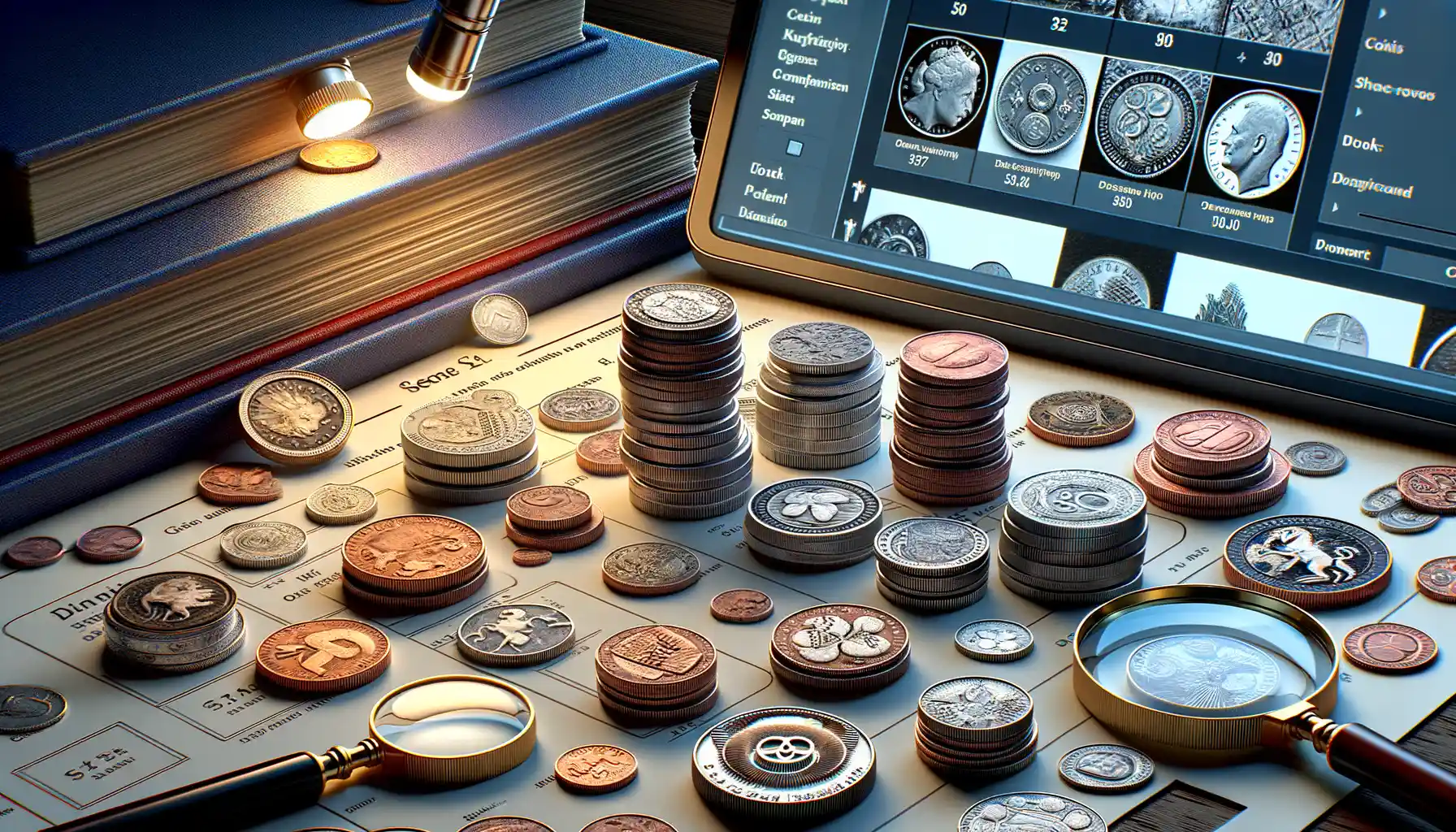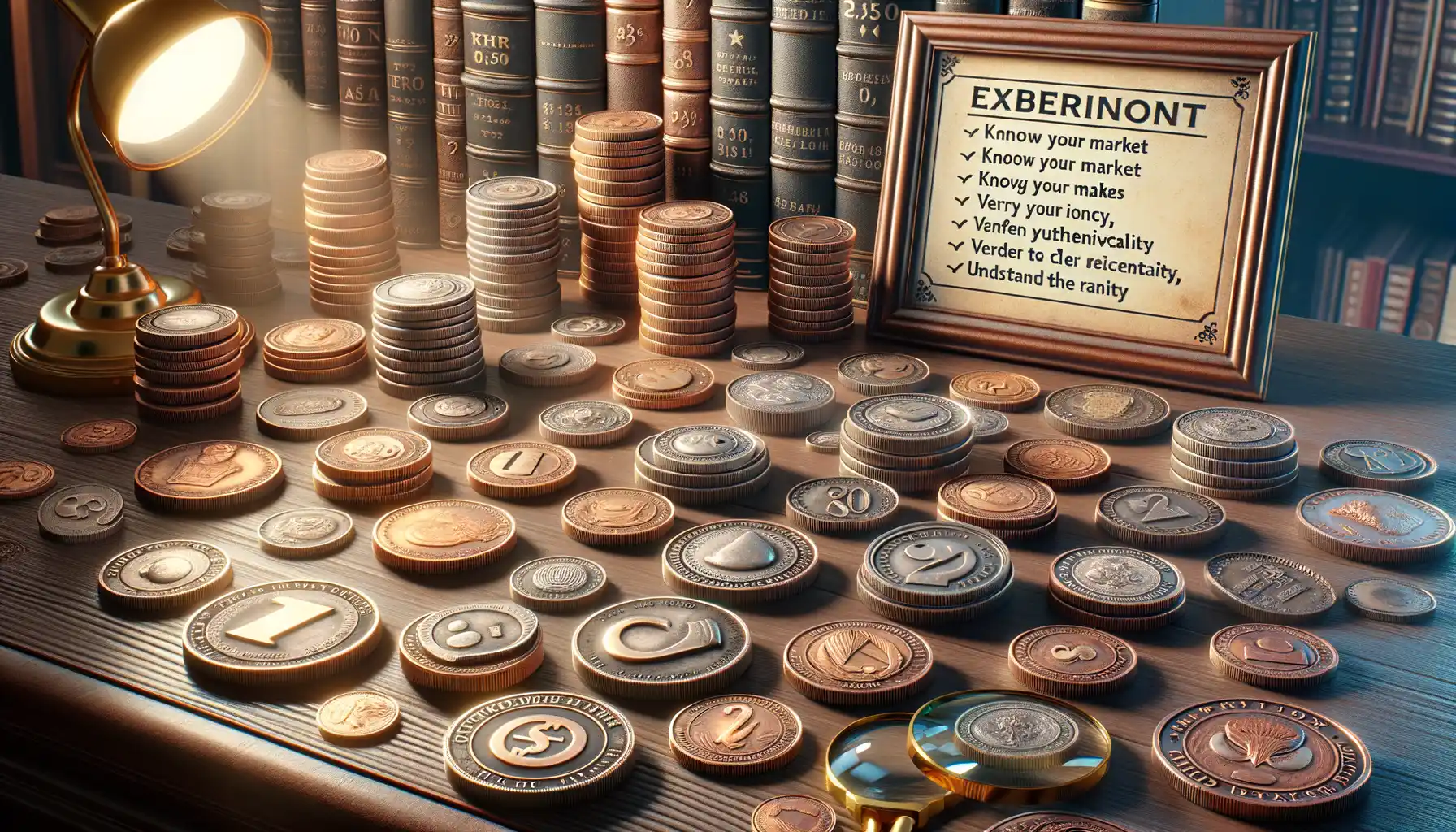Top 10 Most Valuable Error Coins of All Time
Introduction to Error Coins and Their Value
What Makes Error Coins So Fascinating?
Imagine holding a coin that defies expectations—a tiny piece of metal with a story to tell. That’s the magic of error coins. Unlike their perfectly minted counterparts, these quirky treasures wear their flaws like badges of honor. From an upside-down design to a completely missing element, every mistake turns into an irresistible conversation starter.
Error coins aren’t just accidents—they’re surprises frozen in time. Think of them as misfit gems, accidentally released into the world by the minting process. Some errors are barely noticeable, while others scream for attention, like a coin missing a date or struck with mismatched dies. And here’s the kicker: collectors love these imperfections! The rarer and more dramatic the mistake, the higher its potential value.
- 1969-S Lincoln Cent with a doubled die—an error so vivid it looks 3D.
- 2000 Sacagawea Dollar struck on a state quarter planchet—talk about a rebellious crossover.
Finding an error coin is like discovering a hidden treasure chest, filled with stories from history and the promise of untapped value. Doesn’t that make your palms itch to check your wallet right now?
Factors That Determine the Value of Error Coins

What Makes One Error Coin a Jackpot and Another Just Pocket Change?
Ever stumbled upon a coin that didn’t look quite right? Maybe the date was off-center, or there was a baffling double imprint. These quirks could make your coin a collector’s dream—or just mildly interesting. So, what separates a truly valuable error coin from the rest? Let’s dive in.
One key factor is **rarity**. The rarer the mistake, the higher the demand. Think of it like a backstage pass to history—if only a handful exist, collectors are racing to snag them. For instance, a misprinted penny from a single run might have everyone buzzing, while a more common error might not raise an eyebrow.
Condition plays a starring role too. Imagine stumbling across a stunning, gleaming coin with an error—it’s like finding hidden treasure. Collectors salivate over coins in top condition or with minimal wear-and-tear.
Other factors include:
So next time you find an odd coin, don’t just toss it away—give it a second, closer look! Who knows? It might be your golden ticket.
List of the Top 10 Most Valuable Error Coins

The Coins That Turn Flaws Into Fortune
Ah, the thrill of discovering a coin that isn’t just valuable, but gloriously, beautifully flawed! Error coins are like the wildcards of the numismatic world. These aren’t your everyday pocket change – they’re rare treasures born from mistakes made at the minting press. Let’s dive into the top 10 most coveted error coins that collectors dream about.
- 1955 Doubled Die Lincoln Penny: The rockstar of error coins! This penny’s dramatic doubling on the date and lettering makes it one for the history books.
- 1943 Copper Lincoln Cent: A copper penny in a sea of wartime steel. A mistake, yes – but one worth over $1 million today.
- 2004 Wisconsin Quarter (Extra Leaf): With its mysterious “high leaf” and “low leaf” variations, this quirky state quarter is a must-have.
- 1970-S Small Date Lincoln Penny: Misaligned proofs make this penny a hot ticket – don’t let its modest size fool you!
- 2000-P Sacagawea Dollar (Wounded Eagle): A striking error causing the eagle to appear “wounded” – poetic, isn’t it?
- 1982 No Mint Mark Roosevelt Dime: The absence of a mint mark catapults this coin from ordinary to extraordinary.
- 1999-P Wide AM Lincoln Cent: A subtle spacing error between the “A” and “M” in “AMERICA” made this penny a legend.
- 1969-S Doubled Die Obverse Lincoln Penny: A jaw-dropping coin where every letter and number shouts its rarity thanks to significant doubling.
- 2007 Presidential Dollar (Missing Edge Lettering): Smooth-sided and unmistakably special, this presidential dollar defies convention.
- 1958 Doubled Die Obverse Wheat Penny: Ultra-rare and worth a small fortune, this penny demands attention with its bold doubling.
Each of these coins tells a story – a happy little accident that turned into something collectors obsess over. So, who knows? Your next handful of spare change could be hiding treasure just waiting to be discovered!
How to Identify and Authenticate Error Coins

Spotting the Gems: What to Look for in Error Coins
Hold onto your magnifying glass—this is where the thrill of the hunt begins! Finding error coins isn’t just about luck; it’s about knowing what quirks and hiccups scream value. Start by examining the coin’s details up close. Is there a doubled image or letters overlapping like a bad photocopy? That’s a doubled die. Does a date stamp look… fuzzy, like it had one too many cups of coffee? That might be a strike-through error.
And don’t forget the edges—most collectors overlook them! Certain coins have incomplete rims or missing edge inscriptions that could set your heart (and wallet) alight. Keep your eyes peeled for anything that looks “off”; asymmetry could be your golden ticket.
- Check for misaligned features, like a crooked portrait.
- Look at coloring—an unusual tone might signal a planchet mistake.
- Inspect repetition in text, like double dates or overlapping letters.
Authenticating Your Error Coin Treasure
Here’s the thing: any coin can *look* rare, but is it the real deal? To ensure you’re not chasing shadows, grab a trusted resource like the Cherrypickers’ Guide or talk to a certified grading service such as PCGS or NGC. They’ll tell you whether you’ve struck gold—or just found a clever counterfeit.
Feel adventurous? You can also test minor errors yourself. For instance, a flipped or rotated design can be spotted by simply spinning the coin—if heads and tails don’t align, bingo! For mystery metals, invest in a basic magnet or precise scale to confirm odd weight deviations.
Your instincts matter too. If something about a coin makes you pause in awe… trust that hunch and dig deeper!
Tips for Collecting and Investing in Error Coins

Ready to Dive into Error Coin Collecting?
Collecting and investing in error coins isn’t just a hobby—it’s like uncovering hidden treasures that tell fascinating stories. But diving into this world can feel a bit like navigating a maze, so let’s break it down into manageable steps.
First things first: set clear goals. Are you collecting for fun, investment, or both? If profits are your priority, start by researching which errors consistently hold their value—for example, the ultra-rare 1955 Double Die Lincoln Cent.
Building a collection is about patience and strategy. Keep an eye on flea markets, auctions, and even pocket change (yes, your morning coffee could come with a side of profit!). Look closely at coins for quirks like off-center strikes or doubled letters—these are often the golden tickets.
- Start small but aim smart: Don’t drain your savings on a single pricey coin. Instead, begin by focusing on affordable, high-potential pieces.
- Know your tools: Invest in essentials like magnifying glasses, reference books, and protective cases. Treat your coins like VIPs!
Keep Your Collector’s Eye Sharp
Learn to spot valuable errors not just with your eyes, but with your instincts. A brilliant collector knows when a coin is more than meets the eye. Networking with other hobbyists or joining local numismatic groups can provide insider insights and tips about trending finds.
Above all, remember that every scratched, misminted or “wrong” coin tells a story. And sometimes, those stories are worth a fortune!
